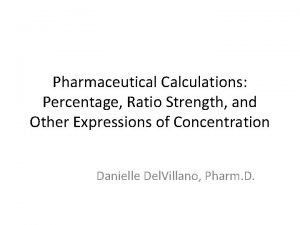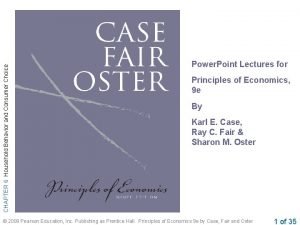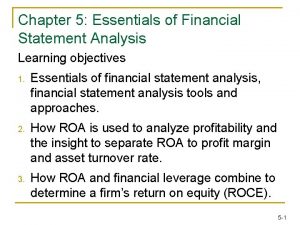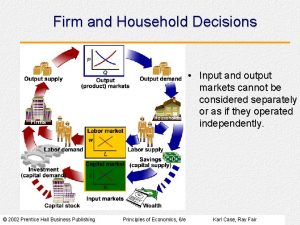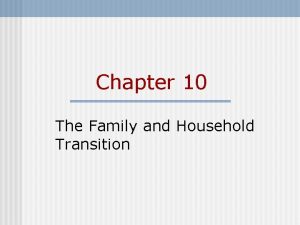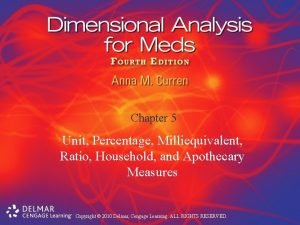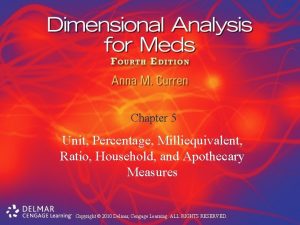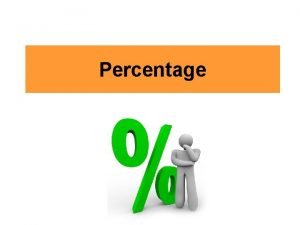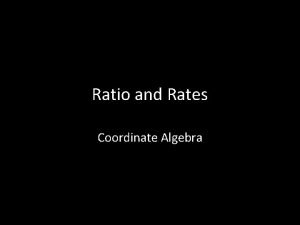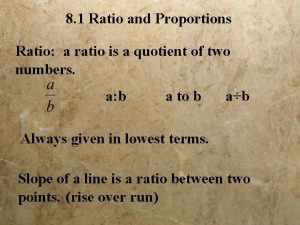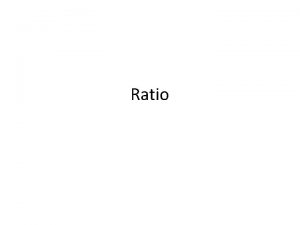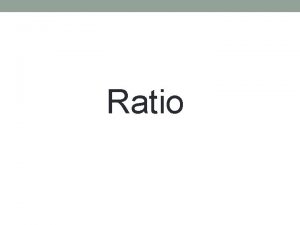Chapter 5 Unit Percentage Milliequivalent Ratio Household and













- Slides: 13

Chapter 5 Unit, Percentage, Milliequivalent, Ratio, Household and Apothecary Measures

Objectives • The learner will recognize dosages: v Measured in Units v Measured as Percentages v Using ratio Strengths v In milliequivalents v In household measure

• • • Measure drug’s in terms of its actions not weight International Units For example Heparin, Insulin, Penicillin Units is written in lower cases such as 2000 units Use commas only if if 5 numbers are used eg 45, 000. Note -Previously accepted abbreviation (U) on Joint Commission (JC) “Do Not Use” list

• % means part per 100 for example Percentage measures % • 100 m. L of a 1% will contain 1 g of drug. • % is also used in Intravenous solution, the greater the % strength the stronger the solution. • In solutions 5 represents the number of grams of drugs.

Milliequivalent (m. Eq) • Milliequivalent (m. Eq) is an exprssion of the number of measures grams of a drug contained in 1 m. L of normal solution. • Milliequivalent (m. Eq) is also written in using Arabic numerals with space in-between. For example 60 m. Eq. Note that the E is upper case and the m&q are lower cases.

m. Eq Dosages • Used in variety of oral and IV solutions • E. g. , potassium chloride most commonly used • 20 milliequivalents written as 20 m. Eq KCl

Percentage and m. Eq Measures • Solutions with combination of percentage and m. Eq measures • E. g. , 5% dextrose in water with 0. 45% sodium chloride and 20 milliequivalents of potassium chloride written as 20 m. Eq KCl in D 5%/0. 45% Na. Cl

• Ratio strengths are primarily used to describe solutions, Ratio Measures representing part of a drug per parts of solution. For example • Solution of 1 : 100 contains one part drug to 100 parts solution • Ratio are expressed using the simplest forms for example 5: 10 ration can be reduced further to 1: 2 • Written separated using Arabic numbers followed by space, colon, space, and another Arabic number

Household Measures • One of the oldest drug measurement systems • Volume measurements include ounce, tablespoon, teaspoon, dram and drop (Drops or gtt).

Household Measures • Drop is integral part of small volume medication preparation • Including those for eye, ear, and nose • Drop used almost exclusively with medications with attached dropper

Household/Metric Household Equivalents Abbreviation 1 Ounce 1 Tablespoon 1 Teaspoon 1 Drop oz tbsp tsp gtt Metric 30 m. L 15 m. L 1 m. L

Apothecary Measures • Basically obsolete ( not used anymore) • Only measure still seen is grain (gr) • Seldom used • Equivalent to 60 mg in metric system

References • Curran, A. Witt, M. (2014) Math for Meds, dosage and solutions. ( 11 th ed). Cengage learning, Stamford, CT.
 What is the difference between ratio and proportion
What is the difference between ratio and proportion Inverse percentages
Inverse percentages Percentage strength w/v
Percentage strength w/v Percentage strength w/w
Percentage strength w/w Two household chapter 6
Two household chapter 6 Two household chapter 39
Two household chapter 39 Two household chapter 30
Two household chapter 30 Acid test ratio and quick ratio
Acid test ratio and quick ratio Genotypic ratio of dihybrid cross
Genotypic ratio of dihybrid cross Current ratio and quick ratio
Current ratio and quick ratio Unit 6 review questions
Unit 6 review questions Harmful but useful materials
Harmful but useful materials Firm and household
Firm and household Family and household transition
Family and household transition


